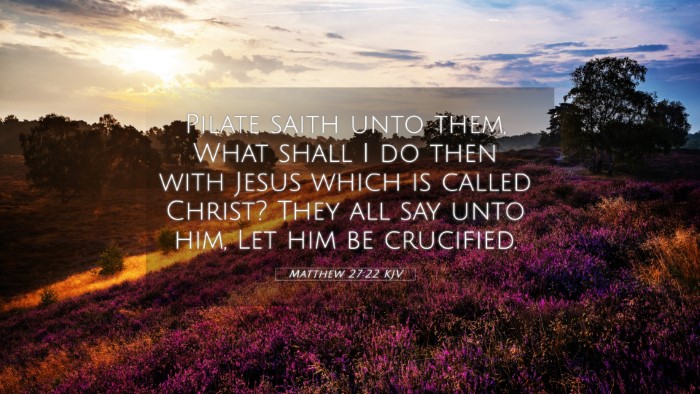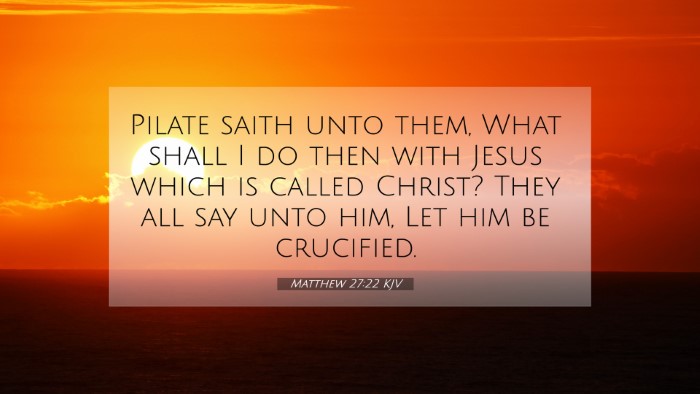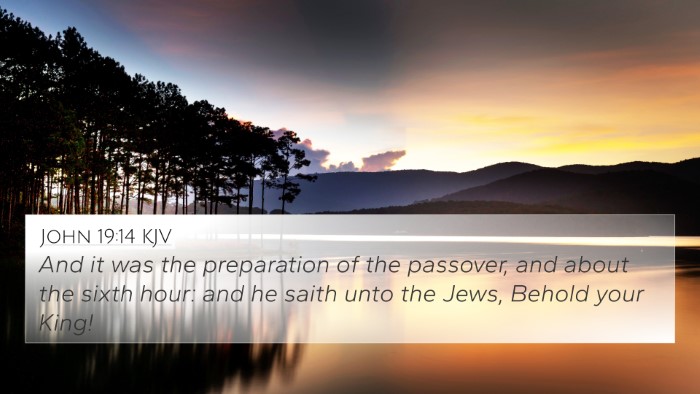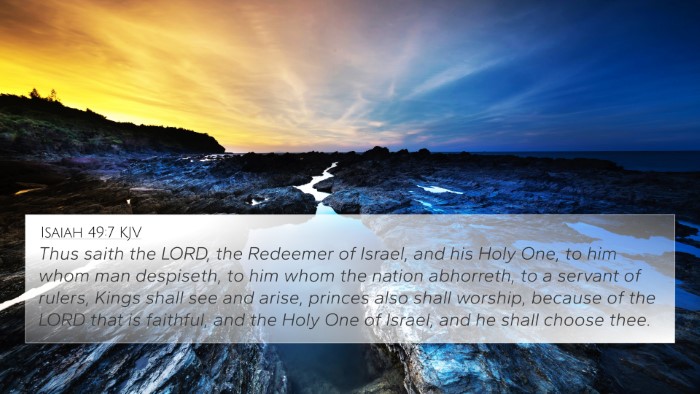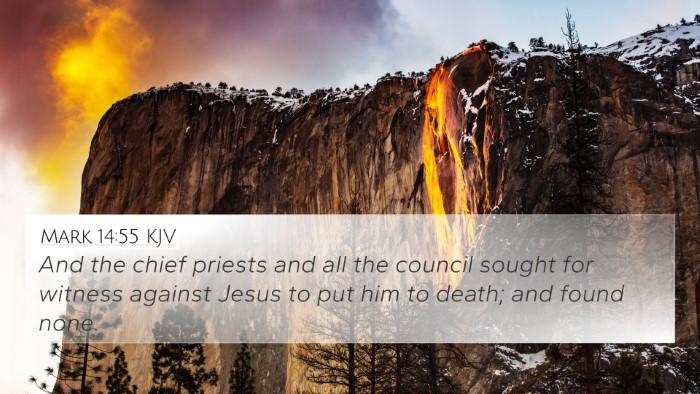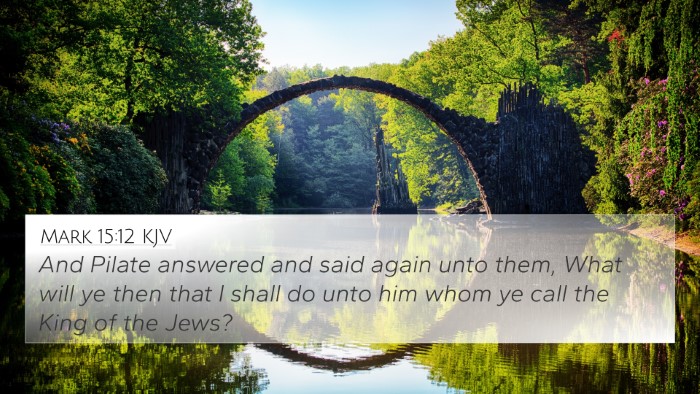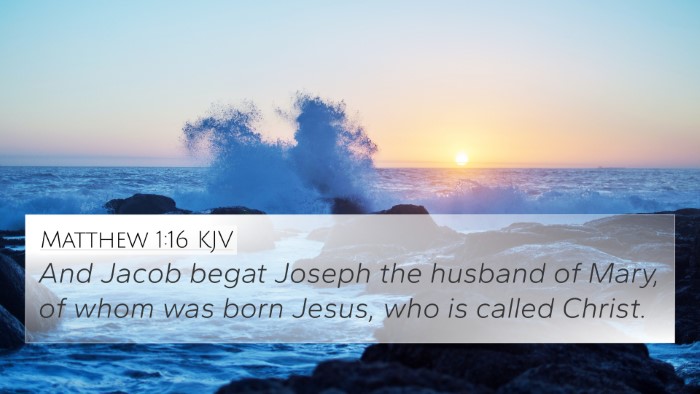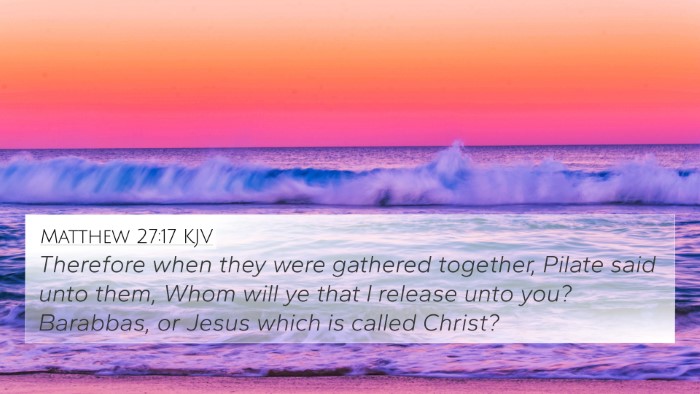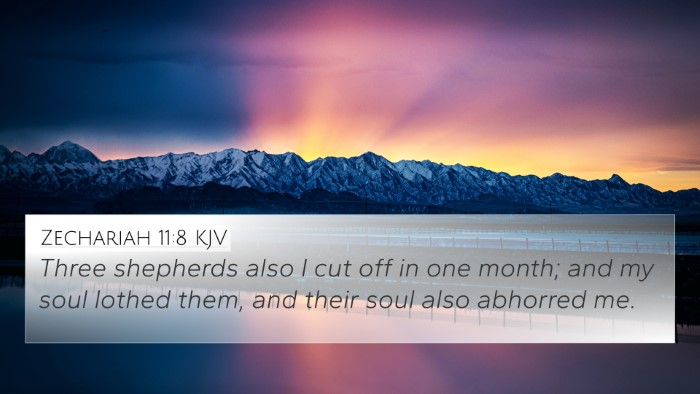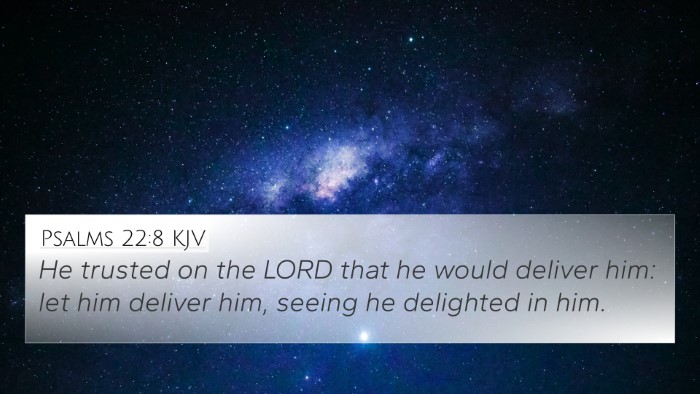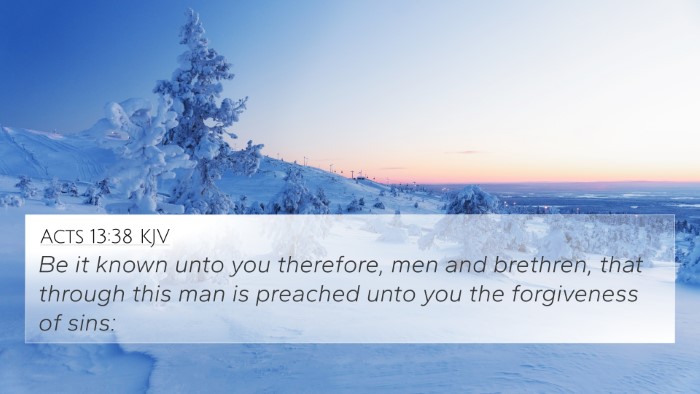Understanding Matthew 27:22
Matthew 27:22 presents a pivotal moment in the trial of Jesus before the Roman governor Pontius Pilate. This verse encapsulates a crucial decision where the crowds demanded the release of Barabbas over Jesus, thus highlighting themes of choice, responsibility, and the rejection of righteousness.
Verse Text
Matthew 27:22 (KJV): "Pilate saith unto them, What shall I do then with Jesus which is called Christ? They all say unto him, Let him be crucified."
Commentary Insights
- Matthew Henry's Commentary:
Henry emphasizes the weight of Pilate's question, illustrating the moral dilemma that faced both Pilate and the crowd. It reflects a moment where the truth is being willingly rejected for the sake of societal pressure. Moreover, the refusal to accept Jesus culminates in the fulfillment of prophecies regarding the Messiah's suffering.
- Albert Barnes' Notes:
Barnes elaborates on the context of the crowd's choice. He notes that Pilate was attempting to distance himself from the responsibility of Jesus’s impending crucifixion, showcasing his internal conflict and the crowd's vehement rejection of Jesus as king. This moment serves as a reminder of humanity's inclination towards sin over the embracing of truth.
- Adam Clarke's Commentary:
Clarke explores the psychological dynamics in play, highlighting the role of public opinion and mob mentality. He underscores that the outcry for Barabbas reveals a deeper spiritual crisis, where the innocent is condemned, and the guilty is set free—a theme that resonates throughout scripture.
Thematic Connections
This verse provides profound thematic connections within scripture, illustrating key biblical motifs such as the rejection of righteousness, the nature of sin, and choices leading to redemption or condemnation.
Related Bible Verses
- John 18:40: "Then cried they all again, saying, Not this man, but Barabbas. Now Barabbas was a robber."
- Luke 23:18-23: "And they cried out all at once, saying, Away with this man, and release unto us Barabbas."
- Matthew 26:56: "But all this was done, that the scriptures of the prophets might be fulfilled. Then all the disciples forsook him, and fled."
- Isaiah 53:3: "He is despised and rejected of men; a man of sorrows, and acquainted with grief: and we hid as it were our faces from him; he was despised, and we esteemed him not."
- Romans 1:28-32: Discusses the rejection of God and the behaviors stemming from that choice.
- Acts 3:14-15: "But ye denied the Holy One and the Just, and desired a murderer to be granted unto you; and killed the Prince of life."
- 1 Peter 2:7: "Unto you therefore which believe he is precious: but unto them which be disobedient, the stone which the builders disallowed, the same is made the head of the corner."
Cross-Referencing Biblical Texts
The act of cross-referencing allows for deeper insight into scripture, providing a comprehensive view of themes and principles that resonate across the Bible. Here are tools and methods for effective Bible cross-referencing:
- Bible Concordance: An invaluable resource for identifying specific terms and their occurrences throughout the scriptures.
- Cross-reference Bible study: Engaging with scripture side-by-side for comparative analysis enriches understanding.
- Comprehensive Bible cross-reference materials: Offer detailed links and thematic studies within various books of the Bible.
- Tools for Bible cross-referencing: Various apps and online resources facilitate quick access to scripture connections.
- Bible reference resources: Study guides that include chains of references acquainted with specific themes.
User Intent Queries
Understanding user intent can enhance study and engagement with scripture:
- What verses are related to Matthew 27:22? This verse connects deeply with the surrounding narrative of Christ's passion and trial.
- How do John 18:40 and Matthew 27:22 connect? Both verses reflect the choice of the crowd to reject Jesus, establishing an inter-Biblical dialogue about choice and repentance.
- Find cross-references for Luke 23:18-23. These verses parallel Matthew 27:22 in emphasizing the rejection by the people.
Conclusion
Matthew 27:22 serves as a significant turning point in the narrative of Jesus' trial, embodying the complex interplay of choice, sin, and prophecy. By engaging in comparative Bible verse analysis and employing cross-referencing, one can uncover a rich tapestry of scriptural meaning, further illuminating the path of faith.

